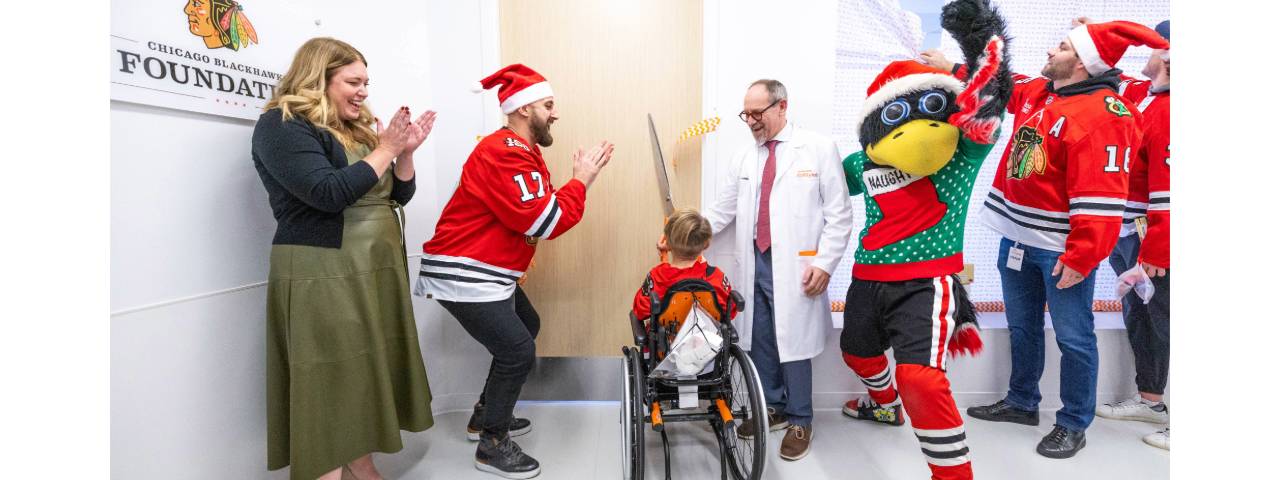Article Summary
Body
- Shirley Ryan AbilityLab researchers continue to lead the study of peripheral nerve injury rehabilitation.
- Specifically, three recently published scientific journal articles explore the use of therapeutic electrical stimulation (TES) to speed regrowth of nerves after injury.
- Research was undertaken by physician-scientist Colin Franz, MD, PhD, and a team of researchers in the rehabilitation hospital’s Regenerative Neurorehabilitation Laboratory.
Body
Peripheral nerve injury rehabilitation is a specialty aimed at restoring function and reducing pain in individuals who have experienced nerve damage in their peripheral nerves — the nerves that extend from the brain and spinal cord to the rest of the body.
In three recently published studies, Shirley Ryan AbilityLab physician-scientist Colin Franz, MD, PhD, and researchers in the rehabilitation hospital’s Regenerative Neurorehabilitation Laboratory continue to expand the study of peripheral nerve injury rehabilitation — and using therapeutic electrical stimulation (TES) to speed regrowth of nerves after injury.
“Peripheral nerve injuries can be life-changing, impacting a person’s ability to move, work, and live independently,” said Dr. Franz. “By developing new treatments like therapeutic electrical stimulation and tailoring them to each individual, we’re opening the door to more effective, personalized treatments that could help patients regain function faster and more completely.”
To follow are summaries of the three research articles:
“Bioresorbable, Wireless Dual Stimulator for Peripheral Nerve Regeneration”
This study — published in Nature Communications and conducted with John Rogers, PhD, Dr. Franz’s frequent collaborator from Northwestern University — examined the use of an improved implanted device to treat nerve injuries with targeted TES.
The device is an enhancement over previous iterations because it allows for simultaneous TES of multiple sites along the length of an injured nerve, and for a longer duration of treatment before the bioresorbable device is absorbed by the body's natural processes.
“The outcomes reported here have utility not only in peripheral nerve repair, but also in other clinical applications such as neuromodulation and functional electrical stimulation that may benefit from long-term treatments with bioresorbable devices,” said Dr. Franz.
A second paper, published in Muscle & Nerve, bridged the study of regenerative rehabilitation and precision medicine — an innovative approach that allows clinicians to develop tailored strategies and treatments and predict outcomes for groups of people based on genetics, environment and other lifestyle factors.
This study showed that, while TES is a promising treatment for nerve damage, individual responses can vary significantly. This study investigated how a specific genetic variant in the brain-derived neurotrophic factor (BDNF) gene called rs6265 (Val66Met) — a common genetic difference that affects one third of people — can impact the therapeutic response to TES.
“Just as people respond differently to medications, our research shows that genetics can influence how well patients respond to therapeutic electrical stimulation,” said Dr. Franz. “One common genetic difference in the BDNF gene is present in roughly one third of the population, which can affect the body’s ability to respond to this therapy. Understanding these differences will help us match the right treatment to the right patient, making rehabilitation more precise and effective.”
Finally, a third study published in Advanced Technology in Neuroscience further explored the implications of the rs6265 (Val66Met) variant in the BDNF gene — which has been associated in preclinical studies with a reduced response to TES and diminished nerve regeneration. This study explored how to better align nerve stimulator technologies with applications in peripheral nerve injury rehabilitation, including advances in bioresorbable devices and the influence of individual patient factors such as genetics.
In preclinical studies, subjects with the BDNF Val66Met (rs6265) gene variant have a diminished response to activity-based treatments such as TES, which could impact nearly one-third of the population.
“This highlights the growing importance of tailoring TES protocols to each patient for optimal outcomes,” noted the study’s authors. “The future of TES in the treatment of peripheral nerve injury will involve … careful consideration given to patient-specific factors and personalized rehabilitation strategies to maximize functional recovery.”

